1. Chitlins – Georgia
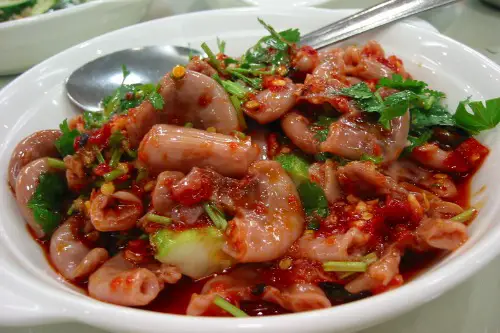
Chitlins, or chitterlings, are a beloved Southern dish, particularly popular in Georgia, USDA explains. These fried pig intestines are cleaned, boiled, and then fried to crispy perfection. While they might sound unappetizing to some, chitlins have been a staple of Southern cuisine for centuries. The smell, however, is often the hardest part for newcomers to get past. It’s a pungent, almost overwhelming odor that can linger long after the dish is prepared. For some, the challenge lies in overcoming the scent.
Despite the initial reservations, many people swear by the flavor of well-cooked chitlins, claiming they are a delicacy full of flavor and texture. When prepared properly, they are crispy on the outside and tender on the inside. Chitlins are typically served with hot sauce or vinegar for added flavor. While the dish may not be for everyone, it remains a cherished part of Southern food culture. If you’re ever in Georgia, trying chitlins is a rite of passage for anyone seeking to understand the full range of Southern flavors.
2. Rocky Mountain Oysters – Colorado

Okay, let’s get this straight: Rocky Mountain oysters are not seafood. They’re not even oysters. This iconic Colorado dish is made from bull testicles, deep-fried to crispy perfection, according to ColoradoInfo. Historically, ranchers created this dish to ensure nothing from the animal went to waste, showcasing resourcefulness in its truest form. While they might look like golden nuggets of fried goodness, you can’t help but wonder what you’re really consuming. Some claim they taste similar to fried chicken or calamari, while others say the experience is more about overcoming the mental hurdle than savoring a delicious bite.
When served at local festivals or specialty restaurants, they’re typically accompanied by a tangy dipping sauce. For those who are brave enough to try it, the crunchiness of the outside and the softness of the inside offer an unusual texture combination. It’s a dish that definitely sparks conversation. If you’re planning to try it, be prepared for the strange mixture of excitement and trepidation that often accompanies first-time diners. Whether you love them or never want to see them again, Rocky Mountain oysters are truly one of Colorado’s most unique regional offerings.
3. Goetta – Ohio
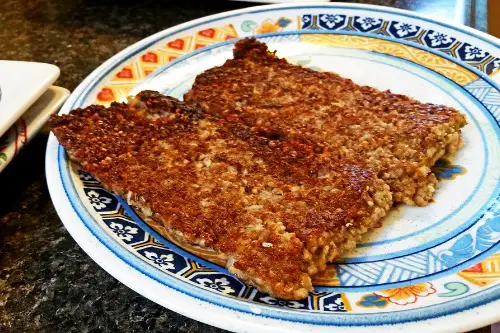
Goetta is Ohio’s take on a breakfast sausage, but with a twist—it’s made with a mix of ground pork, beef, and oats. Yes, oats. While it might sound strange to some, this traditional dish has been a beloved staple in Ohio kitchens for generations, Glier’s Goetta explains. The combination of meat and grain is seasoned with a variety of spices, then fried to a crispy golden brown. The texture might surprise you; it’s almost like eating a savory, crispy bowl of oatmeal. Some people love it, while others are put off by the unusual mix of ingredients.
Goetta is often enjoyed for breakfast, served with eggs or sandwiched between slices of bread. It’s a hearty, filling meal that keeps you satisfied through the morning. Ohioans take great pride in their goetta, often claiming that it’s an essential part of their culinary heritage. While it might not be the most popular dish nationwide, goetta has a dedicated following, particularly in the Cincinnati area. If you’re ever in Ohio and looking to try something local, give this oat-infused breakfast sausage a shot, but be prepared for a texture you won’t soon forget.
4. Lutefisk – Minnesota
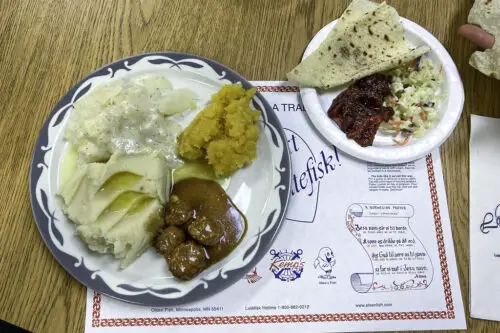
Lutefisk is a unique dish rooted in Minnesota’s Scandinavian heritage, Minnesota Monthly shares. It starts with dried whitefish, which is soaked in lye—yes, lye, the same substance found in drain cleaner. After the soaking process, the fish is rinsed thoroughly before being boiled. The result is a gelatinous, fish-flavored texture that might resemble Jell-O more than the seafood you’re used to. While the texture can be a hard pill to swallow, the strong flavor is something that loyal fans of the dish find comforting and nostalgic.
This dish is usually served during the holiday season, particularly in Scandinavian communities. If you visit a Scandinavian supper club in Minnesota, you’ll likely encounter lutefisk at the table alongside other traditional offerings like Swedish meatballs. While the smell of lutefisk can be quite potent and even off-putting to newcomers, those with a taste for the dish claim it’s a delicacy worth savoring. If you’re ever in Minnesota and feeling adventurous, lutefisk is an experience that lets you tap into the state’s rich Scandinavian roots, but make sure you’re prepared for its divisive nature.
5. Pickled Pig Lips – Louisiana
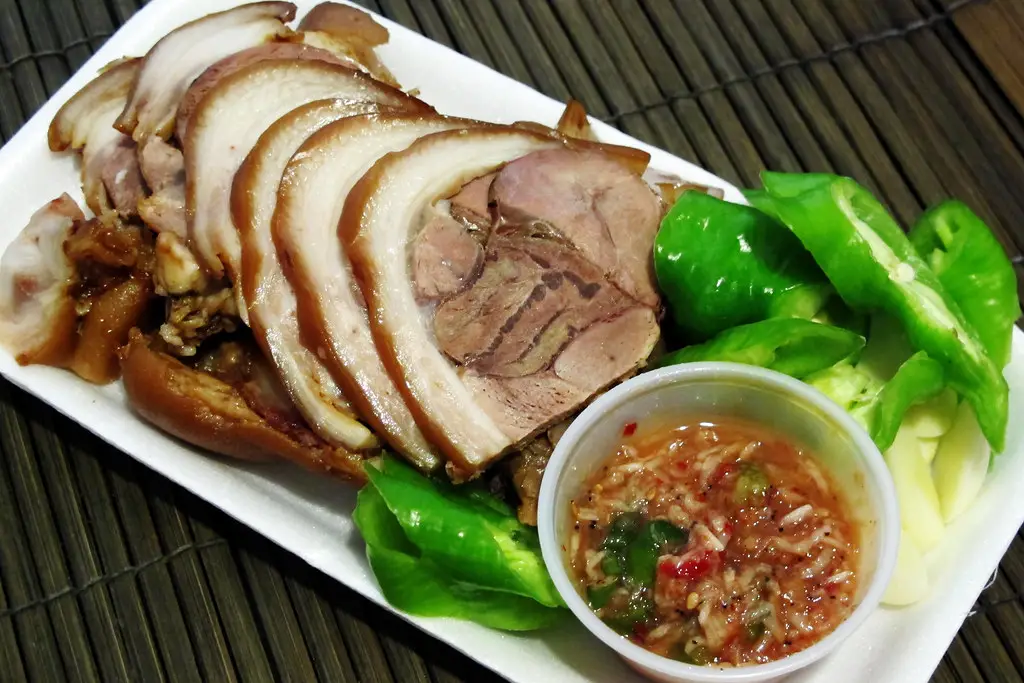
Pickled pig lips might sound bizarre, but in Louisiana, they’re a beloved snack that’s perfect for pairing with a cold beer, according to NPR. These pickled treats are exactly what they sound like: pig lips, soaked in vinegar and other tangy spices. They’re often found in jars at convenience stores, alongside other pickled delights like eggs and sausages. While the thought of eating pig lips may be hard to stomach for some, the locals claim they’re a delicacy worth trying.
The texture of pickled pig lips is chewy, and the vinegar bath gives them a sour, salty flavor that might remind you of other pickled foods. It’s a taste that’s both strange and intriguing—like a savory version of pickled fruit. Despite their unconventional nature, pickled pig lips are a popular snack in Louisiana, frequently enjoyed by those who want to experience the state’s unique take on pickled foods. If you’re ever in Louisiana and looking for something different to try, give these tangy treats a shot. Just be prepared to embrace a new and slightly strange eating experience.
6. Akutaq (Eskimo Ice Cream) – Alaska

Akutaq, also known as Eskimo ice cream, is far from the sweet treat you might expect. This unusual dish is made by whipping animal fat, fish, and berries into a creamy, savory concoction. Traditionally, it was made using seal or moose fat, but today, it’s often prepared with shortening like Crisco. Akutaq is often served as a dessert, but it doesn’t carry the sweetness of typical ice cream. Instead, it has a rich, oily texture that’s both savory and slightly fishy.
In Alaska, Akutaq is a treat with deep cultural significance, often prepared during special occasions and gatherings. The berries in the mix provide a burst of color and a hint of tartness, which balances the richness of the fat. Despite its unorthodox ingredients, Akutaq remains a beloved part of Alaskan indigenous food traditions. For those who are used to sweet ice cream, Akutaq can be a challenging dish to try. But for the adventurous eater, it’s an opportunity to experience a unique dessert that combines the flavors of the Alaskan wilderness.
7. Garbage Plate – New York

The Garbage Plate from Rochester, New York, is a dish that truly lives up to its name. It’s a massive plate of food, typically consisting of home fries, macaroni salad, baked beans, hamburger meat, and hot sauce. While the combination of ingredients might seem like a random assortment, they come together to create a flavorful, hearty meal. The sight of the dish is enough to make you think someone accidentally emptied the contents of their fridge onto your plate, but once you dive in, it’s surprisingly satisfying.
Originally created as a way to use up leftovers, the Garbage Plate is a local favorite and a symbol of Rochester’s comfort food scene. The dish is typically served with a choice of protein, often hamburger, hot dog, or even grilled chicken. The layers of starch, protein, and sauce create a satisfying meal that’s both indulgent and filling. It’s a perfect late-night treat for those craving something greasy and substantial. If you’re ever in Rochester, the Garbage Plate is a must-try for anyone looking to experience a true local culinary creation.
8. Boiled Peanuts – South Carolina
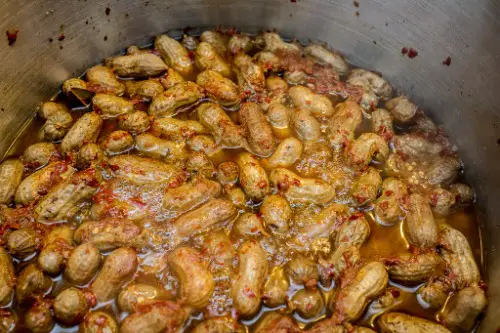
In South Carolina, boiled peanuts are a beloved snack that’s quite different from your typical peanut experience. These peanuts are boiled for hours in salty water, transforming them into a soft, bean-like texture that might initially seem off-putting to those expecting a crunchy snack. They’re messy, soggy, and not exactly something you’d grab for a quick bite, but for South Carolinians, they’re an iconic treat that’s often enjoyed during festivals or while tailgating.
The soft, mushy texture of boiled peanuts is something that takes a bit of getting used to, especially for those accustomed to roasted or salted peanuts. The salty brine gives them a rich, savory flavor that’s perfect for snacking. While they might seem like an odd dish to newcomers, locals swear by them, often citing the unique experience of enjoying a warm, comforting bowl of boiled peanuts. If you’re ever in South Carolina, give them a try—but be ready for a completely different peanut-eating experience.
9. Fried Brain Sandwich – Indiana
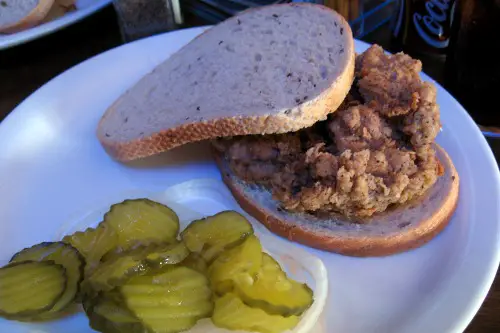
In Indiana, the fried brain sandwich is a dish that’s not for the faint of heart. Made from calf brains, this sandwich was once a popular item, especially before fears about mad cow disease began to surface. The brains are battered, fried, and served between two slices of bread, often with lettuce, tomato, and other condiments. The texture of the brain is incredibly smooth and creamy, almost like custard, which contrasts with the crispy exterior.
For those willing to try it, the fried brain sandwich offers a unique culinary experience. While the idea of eating brains might be unsettling for many, fans of the dish claim that it’s surprisingly tasty, with a rich and delicate flavor. In the past, the sandwich was a common fixture at local diners and sandwich shops, though its popularity has waned. If you’re feeling adventurous and curious about Indiana’s regional food traditions, the fried brain sandwich is a must-try for those who are open to exploring unusual flavors.
10. Livermush – North Carolina

Livermush is a dish that takes pork to a whole new level, especially in North Carolina. It’s made from pig liver, head parts, and cornmeal, then fried until crispy. Served either as a breakfast item or in a sandwich, livermush is beloved by many locals, despite its off-putting ingredients. The flavor is rich and savory, with the cornmeal adding a hearty texture that complements the pork.
Livermush is a staple in North Carolina, particularly in the western parts of the state, where it’s often enjoyed with grits or eggs. While it may not be a dish for everyone, especially those who aren’t fans of liver, it has a loyal following among those who appreciate its unique taste. For the uninitiated, the idea of eating pig liver and other head parts may seem unappetizing, but it’s a cherished part of the state’s culinary heritage. If you’re looking to dive into North Carolina’s regional foods, livermush offers a distinctive flavor that’s sure to leave an impression.
11. Fried Kool-Aid – California
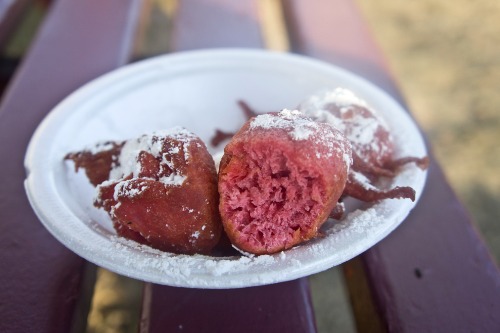
Fried Kool-Aid might sound like a bizarre novelty food, and that’s because it is. This unique treat comes from California, where fair food vendors decided to take the iconic powdered drink mix and turn it into a fried dessert. The Kool-Aid powder is mixed into dough, then deep-fried like a donut hole. The result is a sugary, bright red ball of dough that’s sweet, greasy, and oh-so-sugary.
Despite the eye-catching color and sweet flavor, fried Kool-Aid is a controversial dish. Some people love the sugar rush, while others find the concept overly indulgent and overly artificial. The treat is typically dusted with sugar and served hot, which makes it a tempting option for anyone with a sweet tooth. However, for many, it’s more of a novelty than a regular craving. If you’re in California and happen to visit a fair or carnival, fried Kool-Aid is an odd but memorable snack that reflects the state’s penchant for inventing outlandish foods.
12. Scrapple – Pennsylvania

Scrapple is a beloved breakfast dish in Pennsylvania, particularly among the Pennsylvania Dutch. It’s made from the leftover scraps of pork—usually bits of the head, liver, and other parts—mixed with cornmeal and spices, then formed into a loaf and fried until crispy. The result is a savory, crispy exterior with a soft, mushy interior. Some people love it for its rich, meaty flavor, while others find it hard to get past the fact that it’s made from some of the less desirable parts of the pig.
Often served with eggs, scrapple is a popular breakfast item in Pennsylvania, especially in rural areas. It’s a dish that’s both hearty and filling, perfect for starting the day. While it might sound off-putting to some, scrapple has been a part of the Pennsylvania food scene for centuries. For those looking to experience traditional Pennsylvania Dutch cuisine, scrapple is an essential dish that showcases the resourcefulness of early settlers in using every part of the pig.
13. Burgoo – Kentucky
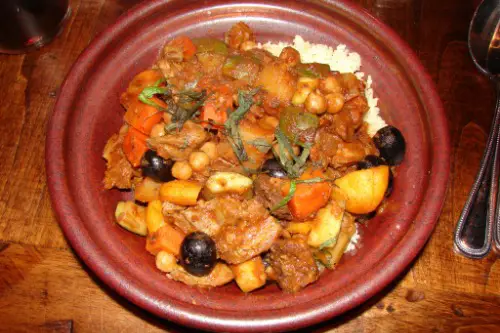
Burgoo is a thick, hearty stew that’s a true reflection of Kentucky’s diverse culinary history. Traditionally made with whatever meat was available—often squirrel, possum, or raccoon—burgoo has evolved over time to include more common meats like chicken and beef. The stew is slow-cooked for hours, allowing the flavors to meld together into a rich, flavorful dish. It’s a meal that speaks to Kentucky’s history of resourcefulness and making use of whatever was available.
While the original recipe called for wild game, modern versions of burgoo are often made with a mix of meats, vegetables, and spices. It’s a dish that’s typically served at festivals, family gatherings, and barbecues, where it’s often enjoyed with cornbread or biscuits. The wide variety of ingredients gives burgoo a unique flavor profile that can differ from batch to batch. Whether you’re tasting a traditional version or a more contemporary one, burgoo is an essential part of Kentucky’s culinary identity, representing the state’s history and love for hearty, satisfying meals.


